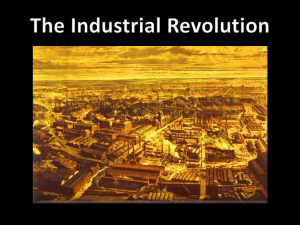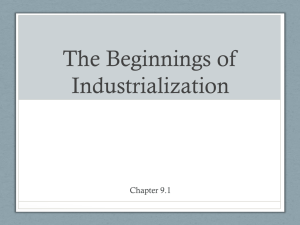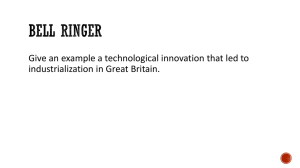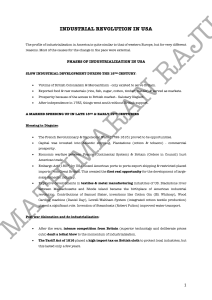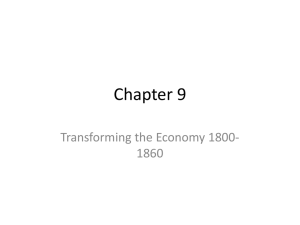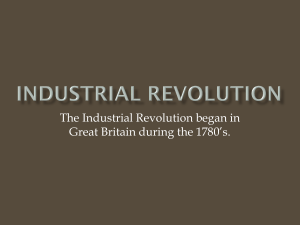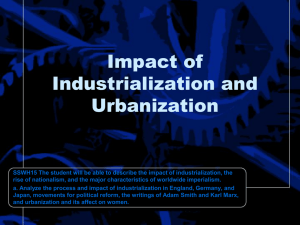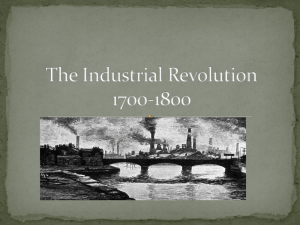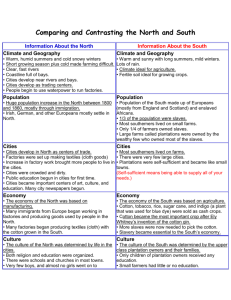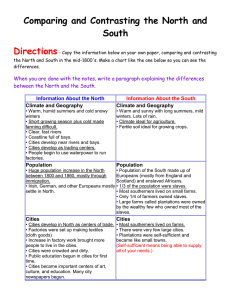Industrial REvolution1
advertisement
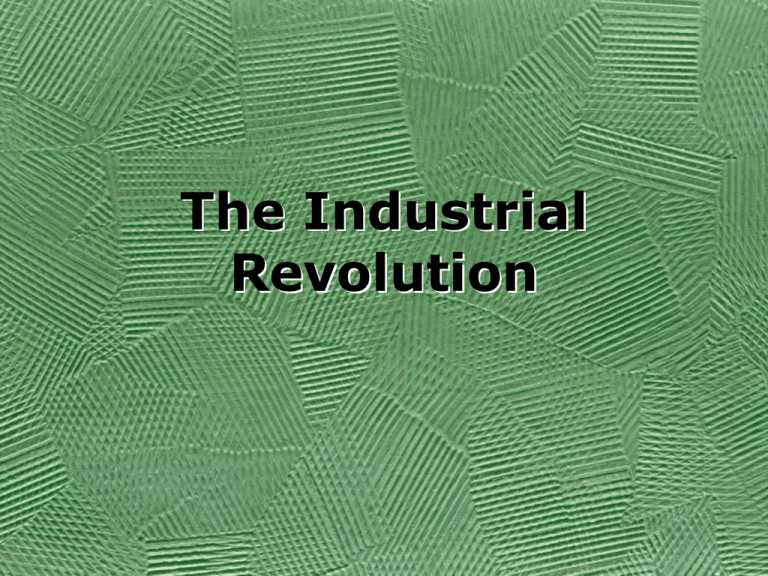
The Industrial Revolution Industrial Revolution • Begins in Britain in the 1700’s. • Then spreads to Europe and the USA. Why Britain? • Farmland + Weather = food supply. – Increase in Population Increased Population • Lots of people in the country who need jobs! – Labor force In order to employ people… • You need money (capital) to start a business. – Britain had people with $ to invest in businesses. Natural Resources Natural Resources are needed to produce goods. • Britain has an abundance of natural resources including: – Coal, cotton, and iron Factories Assembly line instructions • A- Wheels- Black • B- Hood/top- Green • C- Doors- Blue • D- Windows- Yellow • E- Headlights- Red • F- Side Mirrors/ Branding(FAUST) - Purple Why did we need factories? • Factories mass produce goods. • They are located in the cities. • They employ immigrants – Mostly women and children • Conditions: Capital • Wealth in the form of money or other assets owned by a person or organization or available or contributed for a particular purpose such as starting a company or investing. • Translation: money that is available for you to start a business. Entrepreneurs • People who start businesses. Cottage Industry • An industry where the creation of products and services is homebased, rather than factory-based. • Make your own thread, and cloth, and clothes in your house! • Meaning: no malls, grocery stores, or Walmarts! Cotton Gin • Eli Whitney 1792 Cleans seeds out of cotton. Spinning Jenny • James Hargreaves, 1764 • Spins cotton into thread. Flying Shuttle • John Kay, 1733 • Weaves large pieces of cloth Steam Engine • James Watt, 1785 • Steam engine powers other machines. Power Loom • Edmund Cartwright 1785 • Weaves cloth-steam powered! Robert Fulton • Clermont, 1807 • Steamboat Industrial Cities • For each picture, you should write down: • 1. What you see in the picture i.e.- I see an apartment building. • 2. What you think the image shows about an industrial city. – i.e- that means the city is overcrowded. Socialism • Believes that gov’t should run businesses. • Factory workers believe in socialism. • They want: Capitalism • Believes in Laissez-Faire- that businesses should operate without gov’t interference. • Business owners believe in capitalism. • Does not want:

